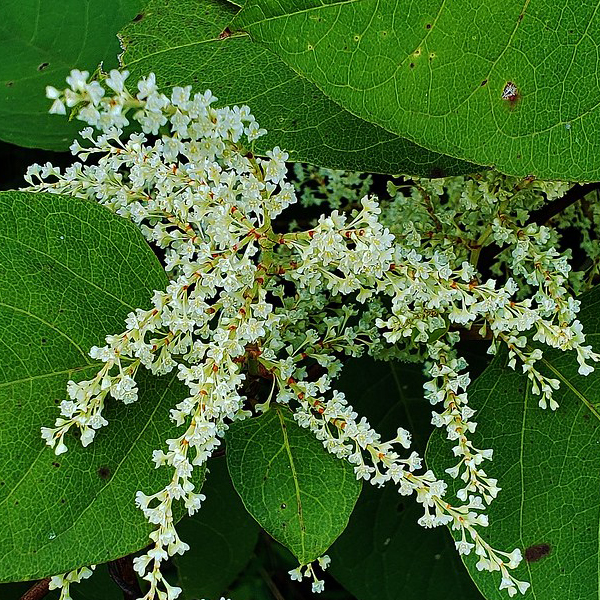As experts in the field of invasive plant species and their impact on the environment, we understand your concerns about Japanese Knotweed seeds in the UK. Japanese Knotweed (Reynoutria japonica) is a highly invasive plant that has become a major issue in many parts of the country. In this comprehensive guide, we will provide you with all the information you need to know about Japanese Knotweed seeds, their potential risks, and how to effectively deal with this persistent plant.
Understanding Japanese Knotweed
Before we delve into the topic of Japanese Knotweed seeds, it’s crucial to have a basic understanding of the plant itself. Japanese Knotweed is a perennial plant native to East Asia that was introduced to the UK in the 19th century as an ornamental plant. Since then, it has spread rapidly due to its ability to grow quickly and reproduce through various means, including seeds and rhizomes.

The Life Cycle of Japanese Knotweed
Japanese Knotweed in the United Kingdom follows a distinct life cycle, characterised by key stages that contribute to its aggressive growth and wide distribution. Understanding each phase is crucial in effectively managing this invasive plant. Let’s explore the various stages of Japanese Knotweed’s life cycle in the UK:
1. Emergence and Growth
During the spring season in the UK, Japanese Knotweed emerges from the ground, displaying small reddish-purple shoots. These shoots grow rapidly, transforming into tall, hollow stems resembling bamboo. This stage is marked by the plant’s ability to capitalise on the UK’s temperate climate, benefiting from ample rainfall and moderate temperatures conducive to its growth.
2. Flowering and Seed Production
In the UK, Japanese Knotweed flowers bloom from late summer, typically between August and September. Clusters of small, creamy-white flowers appear at the tips of the stems, forming plume-like inflorescences. Although seed production is relatively lower in the UK compared to its native range, the flowers play a crucial role in the plant’s reproductive cycle.
3. Seed Dispersal and Dormancy
After successful fertilisation, the flowers of Japanese Knotweed develop into winged fruits known as achenes, which contain numerous seeds. These lightweight fruits enable easy dispersal by wind, water, animals, or human activities. While seed dispersal is less common than vegetative spread through rhizomes, it remains a potential avenue for establishing new infestations. Notably, Japanese Knotweed seeds possess an impressive dormancy capability, remaining viable in the soil for several years until suitable conditions for germination arise.
4. The Impact of the UK Climate
Japanese Knotweed thrives in the UK’s temperate climate, taking advantage of the region’s specific environmental conditions. The plant’s growth is facilitated by frequent rainfall and moderate temperatures, allowing it to grow rapidly and reach heights exceeding 2 metres (6.5 feet) during the summer. Moreover, the UK’s relatively mild winters and consistent temperatures throughout the year enable Japanese Knotweed to survive and persist, even in colder regions.
It is not advisable to try to remove Japanese Knotweed yourself
Many types of knotweed can easily be mistaken by the untrained eye and has the potential to spread when it’s dug up
Japanese Knotweed Seed Viability
The invasive nature of Japanese knotweed in the UK can be better understood by examining how it spreads as a non-native plant. As a gynodioecious species, Japanese knotweed has both female and hermaphrodite variants, which need to be in close proximity for the weed to effectively spread via seeds. However, when Japanese knotweed was originally imported to Britain in the 19th century, only the female form was introduced.
With no hermaphrodite plants present to fertilise and produce viable seeds, Japanese knotweed has been unable to propagate through seed dispersal across the UK countryside. This reproductive limitation would typically curb the weed’s ability to spread. However, Japanese knotweed has adapted through its aggressive underground rhizome root system, enabling it to spread prolifically across Britain without reliance on seeds.
Rhizome fragments as small as 0.7g can generate new shoots and infestations. This makes the transportation of contaminated soil between sites one of the primary mechanisms facilitating Japanese knotweed’s rapid U.K. invasion. While above-ground growth dies back each winter, the robust rhizome system persists, making Japanese knotweed extremely hard to eradicate from the British landscape once established. Clearance requires meticulous long-term treatment of both visible growths and the hidden subterranean rhizome network.
The Limited Risks of Japanese Knotweed Seeds in the UK
While Japanese knotweed seeds contribute to the spread of this invasive plant in its native range, seeds do not play a significant role in the United Kingdom. This is because only the female Japanese knotweed variant was introduced to the UK over a century ago. With no male plants present to fertilise and produce viable seeds, Japanese knotweed relies entirely on its underground rhizome system to spread prolifically across Britain.
Rhizome fragments, rather than seeds, enable the plant to regenerate into new infestations. Transportation of contaminated soil is one of the primary ways Japanese knotweed spreads between sites in the UK. The robust rhizome network also makes the plant extremely persistent once established, as it can lie dormant and undiscovered for years before regenerating.
Control Measures That Target the Rhizomes
To effectively manage Japanese knotweed in the UK, control efforts should focus on the root rhizome system rather than seeds. Methods include:
- Excavation – Physically digging out the entire rhizome network.
- Herbicide application – Using selective herbicides designed for Japanese knotweed.
- Removal of all visible growth – Cutting stems and leaves to prevent photosynthesis.
- Root barrier installation – Preventing lateral spread of rhizomes.
- Professional treatment programs – Over multiple seasons to exhaust rhizome reserves.
- Ongoing monitoring and maintenance – To spot any regrowth.
While Japanese knotweed seeds can contribute to invasion in other countries, UK strategies should concentrate on the plant’s underground rhizome behavior to successfully control and prevent further spread. Specialist advice is recommended when dealing with Japanese knotweed.

Legal Obligations and Responsibilities
It’s important to be aware of the legal obligations and responsibilities associated with Japanese Knotweed. Under the Wildlife and Countryside Act 1981, it is an offence to “plant or otherwise cause Japanese Knotweed to grow in the wild.” Furthermore, homeowners and landowners have a responsibility to prevent the spread of Japanese Knotweed onto neighbouring properties.
If you suspect the presence of Japanese Knotweed on your property, it is advisable to consult with a qualified specialist who can assess the situation and provide guidance on the appropriate course of action. Ignoring the problem or attempting ineffective control methods can result in further spread and potential legal consequences.
Resources
The Royal Horticultural Society (RHS): The RHS provides valuable information on Japanese Knotweed and its control. Visit their website at www.rhs.org.uk for expert advice, practical tips, and guidance on managing invasive plant species.
Gov.uk – Japanese Knotweed Code of Practice: Access the official code of practice for the management of Japanese Knotweed on construction sites by visiting www.gov.uk/guidance/japanese-knotweed-code-of-practice. This resource provides specific guidelines for professionals and contractors dealing with Japanese Knotweed in construction and development projects.
The Property Care Association (PCA): The PCA offers a wealth of resources related to Japanese Knotweed and other invasive plants. Their website, www.property-care.org, provides access to expert advice, training courses, and a directory of accredited contractors who specialise in invasive plant management.
The Environment Agency (EA): The EA has useful information on Japanese Knotweed and its impact on the environment. Visit their website at www.environment-agency.gov.uk to learn more about the legal obligations, reporting procedures, and environmental concerns associated with Japanese Knotweed.
Check for Invasive Weeds
Contact us to discuss arranging a site visit report to check your site for invasive weeds likely to give rise to problems.
Book an appointment for a quick call









